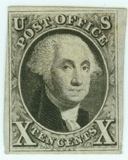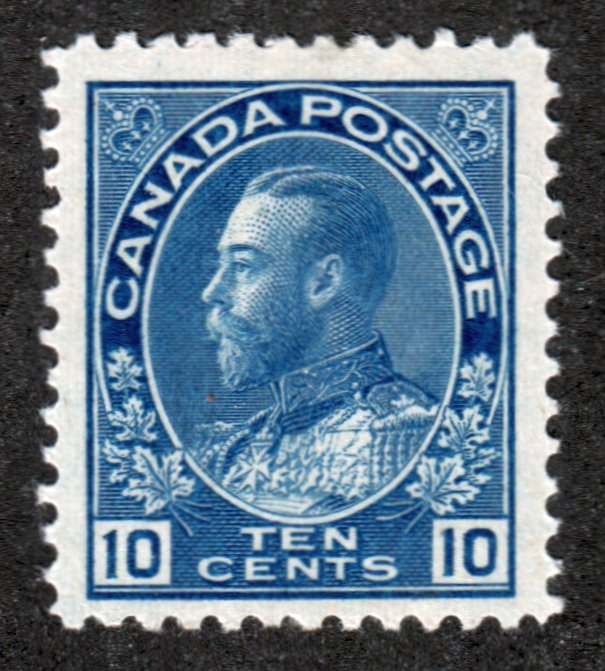
Discussion - Member to Member Sales - Research Center

Discussion - Member to Member Sales - Research Center



Login to Like
this post
A quick look in the catalogue shows a reference to a number of issues that were produced with both ordinary and fluorescent paper. The Scott 399 you reference is one of those stamps. Since Scott does not give separate listings for the two different types of paper, others are apparently using the added "p" as a reference to the fluorescent paper version as a short-cut (not having to go through the hassle of referencing it as a fluorescent-paper version). The ordinary paper version would not have the added "p".
I specialize in Germany and this is also seen with some German issues where both types of paper where used. Again, Scott does not give separate numbers to the two different versions of paper.

Login to Like
this post
Thxs...I guess this time my assumption was pretty much right..I hate to assume because that sometimes gets me in trouble... SOR has gotta have the most responsive members in the internet universe...always find help when I'm looking for it....
SOR has gotta have the most responsive members in the internet universe...always find help when I'm looking for it....
Have a great day and great long weekend!

Login to Like
this post
Interesting that Scott took the pains on that one stamp..Usually one has to go to the country specific specialized catalog for such info. Guatemala will re issue the same stamp a few years later...but it probably has a new printing company,paper, gum and perforation. Some of the really serious collectors look for these flyspeck types, i do what i can but do not go looking for them.

Login to Like
this post
the "p" is common among the GB listings; it's one of those minor numbers that actually makes immense sense as the suffix explains precisely what's happening. of course, p could also refer to perforations or peaks/valleys.

Login to Like
this post

11:53:50am
I hardly think a stamp on phosphorescent paper, or with phosphor coating, or with one of more phosphor bars the length of the paper can be called flyspec varieties,. That implies some small minotr diffeence, sometimes an error.
Quite often stamps with some phosphorescence variation are printed by different printers, from different plates at different locations and widely different dates.
Starting with US #331 there are some thirty odd red (more or less) stamps using the same image of George Washington Collecting them all would be a project but I do not think they are just "flyspec" variations.

Login to Like
this post
Just a minor clarification. Phosphorescence is not the same as flourescence,which is not the same as surfaced paper (optical brightening agent or OBA).
OBA is bright passive reaction to UV light - it is a by-product of chemicals used to improve the clarity of printing.
Flourescence is an active reaction to long and/or short wave uv used for facing or sorting purposes.
Phosphorescence is also an active reaction but works because there is an "afterglow" after the uv is switched off - thus when used on flourescent paper envelopes there is no confusion with the background.
It is actually much more complicated than that - depending on the machinery used for processing mail. Some stamps have flourescent paper and phosphorised bars and some stamps have different properties which are excited by different wavelengths of uv.
As an example- at one stage in UK automated sorting, flourescent paper on the stamp "faced" the envelope in the correct position for cancellation while phosphor bars/bands seperated first and second class mail-streams. Of course ever-improving and speedy automation mean that the specifications of these coatings are evolving all the time.

2 Members
like this post.
Login to Like.

04:46:56pm
" ... It is actually much more complicated than that ..."
Yes, to say the least,
The Deegam Handbook has a full chapter on Phosphorescence, Fluorescence Luminescence and Iridescence of some 36 pages. Long and involved but it is all explained including the recent questions concerning Dull and Bright Phosphors that was discussed in the Great Britain Topic last month.

Login to Like
this post
I hope that some readers may go back and read about the two types: fluorescent paper and phosphorescent paper. Is there a way by using LW or SW lamps to distinguish between the same stamp printed on both papers?
Thanks, Virgil

Login to Like
this post

05:49:42am
" .... Is there a way by using LW or SW lamps to distinguish between the same stamp printed on both papers? ...."
An interesting query.
To quote Malcolm's answer a bit above;
".... Fluorescence is an active reaction to long and/or short wave uv used for facing or sorting purposes. Phosphorescence is also an active reaction but works because there is an "afterglow" after the uv is switched off -...."

Login to Like
this post
04:28:51pm
Occasionally I see a stamp listed in an article or data info as follows: Denmark #399 has been given the number of 399p. Scott cat. does not show that 'p' anyplace and I can't find anything on the meaning of a 'p' next to the cat. #. What could the author of this list mean by adding it? Looking at Denmark 399 I find my UV light illuminates a couple of my stamps but not the others. Could they possible have this 'p' stand for phospherous? I don't mind researching stuff but this one's got me confused..

Login to Like
this post

re: General Question
A quick look in the catalogue shows a reference to a number of issues that were produced with both ordinary and fluorescent paper. The Scott 399 you reference is one of those stamps. Since Scott does not give separate listings for the two different types of paper, others are apparently using the added "p" as a reference to the fluorescent paper version as a short-cut (not having to go through the hassle of referencing it as a fluorescent-paper version). The ordinary paper version would not have the added "p".
I specialize in Germany and this is also seen with some German issues where both types of paper where used. Again, Scott does not give separate numbers to the two different versions of paper.

Login to Like
this post
04:53:02pm
re: General Question
Thxs...I guess this time my assumption was pretty much right..I hate to assume because that sometimes gets me in trouble... SOR has gotta have the most responsive members in the internet universe...always find help when I'm looking for it....
SOR has gotta have the most responsive members in the internet universe...always find help when I'm looking for it....
Have a great day and great long weekend!

Login to Like
this post

Auctions
re: General Question
Interesting that Scott took the pains on that one stamp..Usually one has to go to the country specific specialized catalog for such info. Guatemala will re issue the same stamp a few years later...but it probably has a new printing company,paper, gum and perforation. Some of the really serious collectors look for these flyspeck types, i do what i can but do not go looking for them.

Login to Like
this post
Auctions
re: General Question
the "p" is common among the GB listings; it's one of those minor numbers that actually makes immense sense as the suffix explains precisely what's happening. of course, p could also refer to perforations or peaks/valleys.

Login to Like
this post
Silence in the face of adversity is the father of complicity and collusion, the first cousins of conspiracy..
02 Sep 2016
11:53:50am
re: General Question
I hardly think a stamp on phosphorescent paper, or with phosphor coating, or with one of more phosphor bars the length of the paper can be called flyspec varieties,. That implies some small minotr diffeence, sometimes an error.
Quite often stamps with some phosphorescence variation are printed by different printers, from different plates at different locations and widely different dates.
Starting with US #331 there are some thirty odd red (more or less) stamps using the same image of George Washington Collecting them all would be a project but I do not think they are just "flyspec" variations.

Login to Like
this post
06:08:31pm
re: General Question
Just a minor clarification. Phosphorescence is not the same as flourescence,which is not the same as surfaced paper (optical brightening agent or OBA).
OBA is bright passive reaction to UV light - it is a by-product of chemicals used to improve the clarity of printing.
Flourescence is an active reaction to long and/or short wave uv used for facing or sorting purposes.
Phosphorescence is also an active reaction but works because there is an "afterglow" after the uv is switched off - thus when used on flourescent paper envelopes there is no confusion with the background.
It is actually much more complicated than that - depending on the machinery used for processing mail. Some stamps have flourescent paper and phosphorised bars and some stamps have different properties which are excited by different wavelengths of uv.
As an example- at one stage in UK automated sorting, flourescent paper on the stamp "faced" the envelope in the correct position for cancellation while phosphor bars/bands seperated first and second class mail-streams. Of course ever-improving and speedy automation mean that the specifications of these coatings are evolving all the time.

2 Members
like this post.
Login to Like.
Silence in the face of adversity is the father of complicity and collusion, the first cousins of conspiracy..
29 Sep 2016
04:46:56pm
re: General Question
" ... It is actually much more complicated than that ..."
Yes, to say the least,
The Deegam Handbook has a full chapter on Phosphorescence, Fluorescence Luminescence and Iridescence of some 36 pages. Long and involved but it is all explained including the recent questions concerning Dull and Bright Phosphors that was discussed in the Great Britain Topic last month.

Login to Like
this post
01:57:06pm
re: General Question
I hope that some readers may go back and read about the two types: fluorescent paper and phosphorescent paper. Is there a way by using LW or SW lamps to distinguish between the same stamp printed on both papers?
Thanks, Virgil

Login to Like
this post
Silence in the face of adversity is the father of complicity and collusion, the first cousins of conspiracy..
28 Oct 2019
05:49:42am
re: General Question
" .... Is there a way by using LW or SW lamps to distinguish between the same stamp printed on both papers? ...."
An interesting query.
To quote Malcolm's answer a bit above;
".... Fluorescence is an active reaction to long and/or short wave uv used for facing or sorting purposes. Phosphorescence is also an active reaction but works because there is an "afterglow" after the uv is switched off -...."

Login to Like
this post

